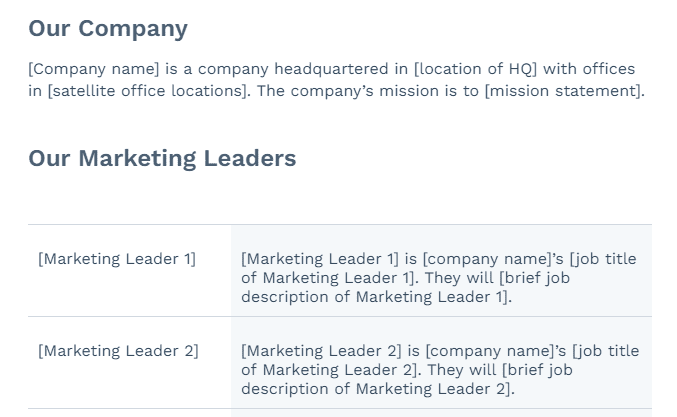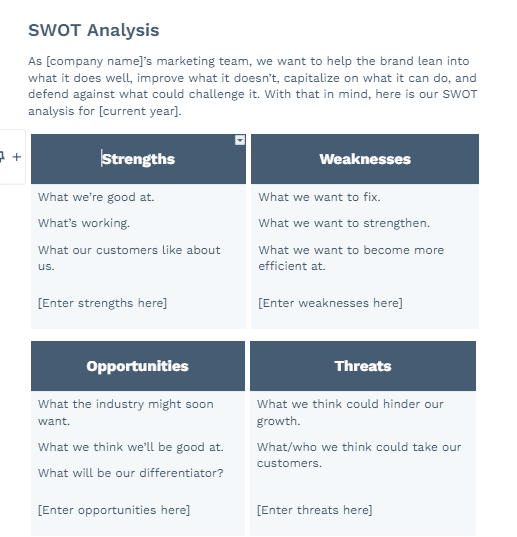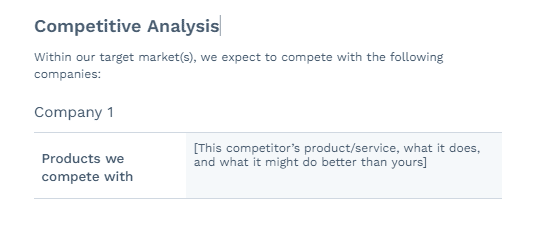Google marketing strategies for chiropractors, and you’ll have hundreds of ideas in seconds. But it’s not about trying every trick in the book and hoping something sticks. It’s about choosing and executing a few proven strategies as best you can. If you’re consistent, the ROI will be well worth the effort.
The key is to consider your goals, look at your available resources, and then identify the best strategies to reach them. In other words, you need a long-term plan that connects all these elements.
Sounds overwhelming?
Don’t worry.
In this blog post, you’ll learn how to create a winning Chiropractic marketing plan and leverage email newsletters, social media, and more to drive business growth.
Table of Contents
How To Build a Chiropractic Marketing Plan
The biggest benefit of creating a marketing plan is you’ll be able to ask better questions.
For example, you’ll reframe ‘how to get more chiropractic patients’ or ‘how to get new chiropractic patients’ as ‘I want to increase my business revenue by $100k and get 500 new patients’.
It will also force you to focus on specific KPIs and the strategies best suited for the job. The individual elements of any marketing plan for chiropractors can indeed vary from business to business. However, the foundational elements remain the same.
Here’s a basic template to get you started on your marketing plan.
1. Executive summary

A marketing plan for chiropractors should always begin with an executive summary. Use it to summarize its key points, including the big goals, metrics, and strategies you plan to use. It should also have an overview of your leadership team, the services you provide, your location, etc.
2. SWOT analysis

This section should assess the business environment’s inherent strengths, weaknesses, opportunities, and threats.
Strengths
Think about all that’s working well in your business. List the unique processes, certifications, therapies, classes, and products (stress balls, fitness equipment, etc.) that set you apart.
Weaknesses
What challenges keep you awake at night? List all the business areas you want to strengthen – talent, processes and systems, etc.
Opportunities
These are external factors that could affect your business in the short, medium, or long term. For example, shifts in patient preferences, supply chain problems, investment trends, policy changes, etc., could potentially open up new use cases, revenue models, or niche markets for your services.
Threats
What do you think could cause problems for your business in the time to come? These could be new technologies, disruptive competitors, revenue leaks, skill issues, etc. Since these ‘threats’ are largely based on assumptions, it’s important to frame your assumptions correctly. This is because perceptions can change when assumptions change.
Related post: 11 Effective Strategies To Attract Modern Patients
3. Competitor analysis

List the names of other businesses you’re likely to compete within your niche. Analyze their products, pricing, positioning, and promotion strategy and highlight comparative advantages and disadvantages.
4. Define the target audience
This is where you would define your ideal customer persona. In vivid detail, visualize their age, income, location, purchase preferences, and pain points. If you’re targeting a corporate clientele, think about the industry they work in. Create a problem statement that encapsulates and associates these pain points with specific customer attributes.
For example, postural problems with people working office jobs. Don’t make this an academic exercise – try putting a face to each persona. Think of existing customers whose attributes closely match your customer personas and use their names instead.
5. Metrics and KPIs
If you want to get buy-in from management or investors, you need specific KPIs to measure ROI. The KPIs you choose depend on the marketing goals for your business. However, here are some foundational metrics that every chiropractic business should focus on.
Customer Acquisition Cost
This reveals how much you spend on average to acquire new patients. To measure CAC, divide the total marketing cost by the new customers you received.
Conversion Rate
This metric shows how effective your marketing efforts have been. To arrive at the final figure, you’ll need to calculate conversion across channels like website, phone, or social media inquiries.
Retention Rate
A high retention rate indicates more patients returning to you for treatments in the future. This translates into sustained revenue.
Customer Lifetime Value
This metric calculates the average revenue per patient over the lifetime of the relationship. It’s an important indicator of profitability for investors or management.
6. Budget

Clarify how you plan to use the funds available to achieve your goals. To do this, provide a breakdown of how much you’d spend on each channel in your marketing mix and your desired outcome.
For example, content marketing is used to educate customers, social media is used for lead generation, etc.
Align each goal with a suitable metric to show how much you expect each channel to contribute to revenue. This will help you justify the expense and ensure buy-in from investors or management.
7. Marketing Strategies for Chiropractors
Finally, list all the marketing strategies you plan to use. This can include everything from content marketing to social media marketing, email marketing, and paid ads. Direct referrals from existing customers don’t count!
We’ll take a look at each of these strategies in the next section.
Read also: CRM in Healthcare to Enhance Patient Satisfaction
Chiropractic Marketing Strategies You Must Invest In
Now, you’ve probably used some of these strategies already. Here are some ways you can leverage them to increase their effectiveness and generate better ROI.
1. Email newsletter
Despite the increasing use of spam blockers, email marketing remains effective as a marketing tool. If you’ve had poor open rates, it’s likely because you used generic messaging. The key is personalizing your email and making it look like you wrote it yourself. After all, your patients are more likely to click and read an email they believe came from their doctor.
Email marketing can be an excellent channel to re-engage patients who haven’t visited in a while or send them holiday greetings. To save time, you can use email automation tools like EngageBay to send emails based on specific criteria. You can also use automated templates to create multiple email variations for new and existing patients in one click.
2. Landing pages

Too much information on one page can be overwhelming for readers. If your practice offers multiple therapies, it’s best that you create multiple landing pages to highlight the benefits of each. Landing pages can also boost local search rankings if you have multiple locations.
To get the most out of them, make sure each page has an engaging headline, offer, and CTA. The address and contact information for the specific location should be displayed. Use testimonials to make the health benefits and patient experience sections look more appealing.
Don’t forget to integrate appointment schedulers so patients can confirm appointments from the page.
3. Social media
Social media can be an excellent platform for engaging with your audience and answering questions in real-time. You can start with a three-tiered content strategy for social media – educational, thought leadership, and direct messaging.
For example, infographics and short videos can be used to break down postural conditions.
Next, use live Q&A sessions, expert interviews, and polls to answer questions and get real-time feedback. Lastly, highlight proprietary processes or techniques and use introductory offers to drive sign-ups and sales.
4. Optimize your website
Your website is at the center of your online presence, and it should look like it. The home page should clearly describe your specialties and high-quality images to add some personality. People connect better with other people, so place photos of yourself and your team at prominent places around the site.
Make sure the CTA is clear and actionable. Don’t forget to add testimonials to build social proof.
5. Paid ads
Targeted paid ads can get you qualified traffic in a fraction of the time it would otherwise take. The key is to use the right mix of search (Google) and social media ads. They each provide distinct advantages.
For example, social ads can give you a broad reach for brand awareness, while search ads are effective for those actively searching for your kind of service.
Compare performance data for both over 3-6 months to benchmark performance and find out how to balance factors like keyword competition and relevance.
5. SEO
If you’re looking for a cheaper way to build brand awareness and drive appointments, search engine optimization (SEO) can help. It enables you to rank higher for popular keywords and drive more traffic to your website. To do this, monitor keyword trends that align well with your positioning and integrate them into the titles, headers, and meta descriptions.
Like any other marketing strategy for chiropractors, SEO takes time and effort to show results. The key is to analyze performance and adjust your strategy over time.
Read also: The Top 6 Healthcare CRM Software And Their Benefits (+Pricing)
Try a Blend of Online and Offline Marketing Strategies
Offline marketing strategies for chiropractors, like conferences and events, still work. However, by integrating offline with online strategies, you can boost the reach and effectiveness of your outreach. Let’s take a look at some ways in which you can do this.
1. Health awareness talks
Organizing health awareness talks can be crowd-pullers for your chiropractic practice. However, the key is to find topics that appeal to your current patients and the general public. You need to build FOMO around the event by using testimonials, compelling CTAs, and setting a short deadline for registration.
You can amplify the reach and engagement of the event by:
- Creating a landing page with the scheduled date and time, activities, and any special offers. Don’t forget to include a registration form.
- Running targeted email campaigns to promote the event and providing exclusive offers.
- Leveraging social media to generate buzz around the event and, in turn, amplify user-generated content to build social proof.
2. Direct response mailers
If you have a compelling message, direct response mailers can more than pay for themselves. Remember to keep the audience in mind when writing direct response copy. Secondly, placement matters. It’s worth paying more for a front-page spot in a magazine or newspaper.
To take it to the next level, consider adding QR codes to the direct mailers and redirecting people who scan them to specific landing pages or your social media channels.
3. Local business partnerships
Entering into partnerships with local businesses like gyms and wellness centers can provide a steady stream of qualified leads for chiropractors.
For example, you can offer consultations as part of the sign-up process for new customers. You can then schedule an appointment and conduct the assessment either at the gym or another location.
Consider promoting partner content on your social channels and vice versa.
4. TV advertising
TV advertising can be expensive, but it can help you reach older demographics who are prime candidates for chiropractic services. You may need to get longer spots (90 secs – 120 secs) for this target audience to understand your message completely.
A better option is to create integrated marketing campaigns combining TV and digital channels like website, social media, and email marketing to drive engagement.
5. Radio
With the growth of internet radio and podcasts, chiropractic professionals can build loyal communities around their brands. The key is to define the target audience and align your content strategy with their needs. If you don’t have the resources to start your podcast, you can leverage advertising opportunities on other podcasts and generate new leads.
All you need to do is search podcast directories on Apple or Google for creators in your niche, compare their performance statistics and user ratings, and pitch them.
6. Billboards
Billboards are ideal for building brand awareness when placed in high-traffic areas. Moreover, if you can supplement it with digital marketing strategies, you can reinforce the message and drive conversions.
For example, you can retarget people likely to have seen your billboard via social media or search ads.
12 Powerful Sales Growth Strategies for 2024 (+ Calculations)
Conclusion
Remember, marketing strategies for chiropractors will continue to evolve in 2024 and beyond. The key is to use data to improvise your approach. CRM tools like EngageBay can sync all your marketing channels and make it easier for you to decide.
Try out our free CRM today and take your business to the next level.
